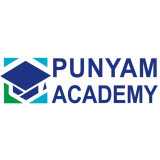This informal CPD article ISO 50001 Documentation Requirements for Energy Management Systems was provided by Punyam Academy, an industry leader in training of international compliance standards.
With the growing energy awareness, compulsions and competition, it is becoming imperative for all manufacturing and process industries to establish an energy management system, increase energy efficiency, and concentrate on significant energy use area to reduce cost. Energy Management System (EnMS) refers to a system used by an organization to manage its activities, products or services in such a way to minimize or eliminate the significant energy use.
ISO 50001: 2018 specifies requirements for establishing, implementing, maintaining and improving an energy management system (EnMS) in order to improve energy performance, including energy efficiency, energy use and energy consumption, of any organization. Development and implementation of ISO 50001 EnMS involves a key step of system documentation.
ISO 50001:2018 Documentation
Clause 7.5 of the ISO 50001:2018 standard requires an organization’s EnMS to include documented information required by this standard as well as documented information determined by the organization as being necessary for the effectiveness of the energy management system. “Documented information” is a common term used for both “documents” and “records”.
The term ‘Documented information’ refers to information and its supporting medium. Documented information is guidelines that should be followed to comply with the requirements of the standard to prevent any mistake, and therefore, effective implementation and control of documented information should be ensured. The medium of documented information could be papers, magnetic, electronic and optical discs, photograph or a sample.
ISO 50001:2018 Documentation Structure
The ISO 50001:2018 standard does not require any specific form of documentation or many procedures. It suggests some documented information only. However, for establishing and implementing a good energy management system and ISO 50001:2018 certification, we suggest four-tier documentation structure, as mentioned below:
1. EnMS Manual
2. EnMS Procedures
3. Work Instructions, SOPs, Process flow Charts, Policies and other documents
4. EnMS Records, Formats, Registers, Logs, etc.
EnMS Manual
It should contain a brief background of the organization, its energy policy and objectives, as a minimum, and also describe the energy management system of the organization. EnMS Manual or Energy Manual communicates company's energy policy and energy objectives to its staff and customers. EnMS Manual is a typical form of main document used in drawing up and implementing EnMS. It is expected to provide an adequate description of the management’s intention to fulfill system requirement while serving as a permanent reference for implementation and maintenance of the EnMS. Some people might confuse between EnMS Manual and Energy Plan.
An EnMS Manual describes the totality of the energy management system operated by a company with regard to all the processes products/services of the company. EnMS manual gives macro level details of how the system is implemented for 50001:2018 requirements.
EnMS Procedures
Although EnMS procedures are optional for ISO 50001:2018, they are considered as the core of EnMS documentation. They support the operation of EnMS processes to establish confidence in the system. EnMS procedures describe the methods of meeting requirements of relevant clauses of ISO 50001:2018. These documents are meant for internal use and should be protected from inadvertent exposure.
Work Instructions and SOPs
As a good work practice, it is advised to prepare work instructions/ SOPs to be available, whereas the absence of such instruction would adversely affect the EnMS. In the practical sense, work instruction may be written, drawings, photographs, computer menu options, machine care / operation, work production documentation, etc. These are practical documents. Work instructions deals with shop-floor level of activities. Their purpose is to clearly direct the operator as to what has to be done and what standard of workmanship is required.
EnMS Records, Forms and Other Documents
These are required to be retained in any EnMS. All these are supporting documents used by the organization to record information for different procedures followed. They belong to the last and fourth tier of documentation. They link the activities written in the procedure to the records kept in the department. This type of documentation serves to demonstrate that the EnMS is operating efficiently in accordance with specific requirements of the EnMS.
ISO 50001:2018 Audit Checklist
Apart from the suggested 4-tier documentation structure, organizations should also prepare an ISO 50001:2018 audit checklist. Audit checklist is a set of questions based on ISO 50001:2018 requirements. Checklists are considered very useful tool for EnMS implementation and internal audit of the implemented system for its effectiveness. It is also very useful for organizations and auditors in preparing for certification audit or any third party audit. Depending on the organization structure, department wise audit checklist can also be prepared.
Flexibility in ISO 50001 Documentation
ISO 50001:2018 allows flexibility to the organization in developing EnMS documentation, which may differ from one organization to other, due to different size of the organization and type of its activities, processes, products and services, complexity of processes and their interactions and training and competence of personnel. In the aforementioned 4-tier documentation structure, the EnMS manual and procedures are optional; but for making a good system many leading organizations are now making the EnMS manual as well as EnMS procedures.
The bottom-line is that the amount of ISO 50001:2018 documentation should support an efficient energy management system without creating a paper bureaucracy.
We hope this article was helpful. For more information from Punyam Academy, please visit their CPD Member Directory page. Alternatively please visit the CPD Industry Hubs for more CPD articles, courses and events relevant to your Continuing Professional Development requirements.













